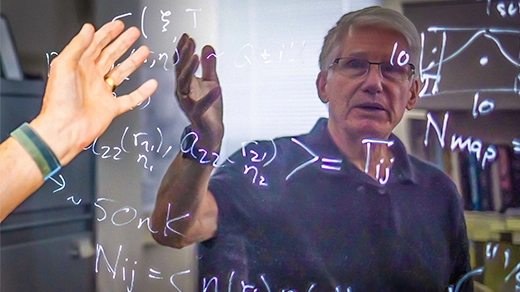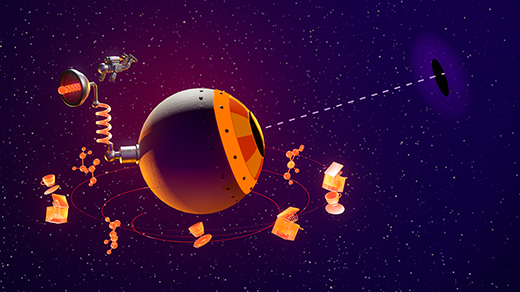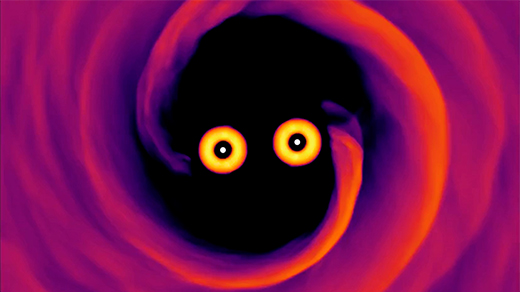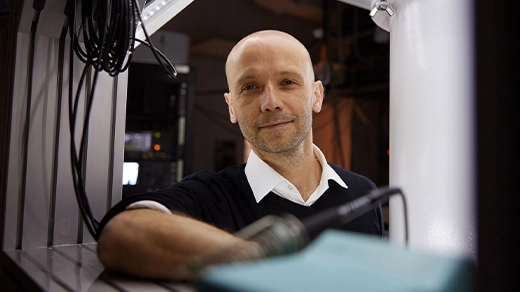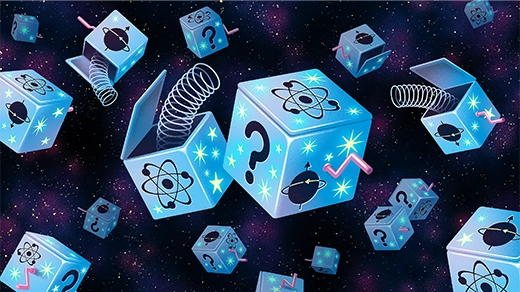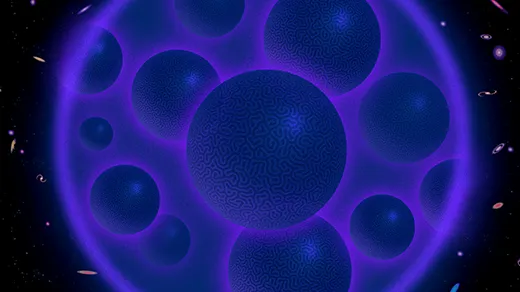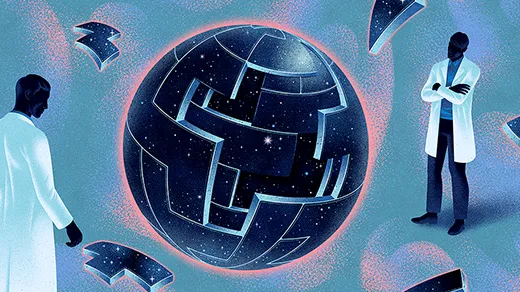What's up in
Dark matter
Latest Articles
The Biggest-Ever Digital Camera Is This Cosmologist’s Magnum Opus
Tony Tyson’s cameras revealed the universe’s dark contents. Now, with the Rubin Observatory’s 3.2-billion-pixel camera, he’s ready to study dark matter and dark energy in unprecedented detail.
The Year in Physics
Physicists discovered strange supersolids, constructed new kinds of superconductors, and continued to make the case that the cosmos is far weirder than anyone suspected.
How Do Merging Supermassive Black Holes Pass the Final Parsec?
The giant holes in galaxies’ centers shouldn’t be able to merge, yet merge they do. Scientists suggest that an unusual form of dark matter may be the solution.
What Could Explain the Gallium Anomaly?
Physicists have ruled out a mundane explanation for the strange findings of an old Soviet experiment, leaving open the possibility that the results point to a new fundamental particle.
He Seeks Mystery Magnetic Fields With His Quantum Compass
Alex Sushkov is updating an old technology with new quantum tricks in hopes of sensing the magnetic influence of dark matter.
Dogged Dark Matter Hunters Find New Hiding Places to Check
Perhaps dark matter is made of an entirely different kind of particle than the ones physicists have been searching for. New experiments are springing up to look for these ultra-lightweight phantoms.
What Is the Nature of Time?
Time is all around us: in the language we use, in the memories we revisit and in our predictions of the future. But what exactly is it? The physicist and Nobel laureate Frank Wilczek joins Steve Strogatz to discuss the fundamental hallmarks of time.
In a ‘Dark Dimension,’ Physicists Search for the Universe’s Missing Matter
An idea derived from string theory suggests that dark matter is hiding in a (relatively) large extra dimension. The theory makes testable predictions that physicists are investigating now.
Clashing Cosmic Numbers Challenge Our Best Theory of the Universe
As measurements of distant stars and galaxies become more precise, cosmologists are struggling to make sense of sparring values.
